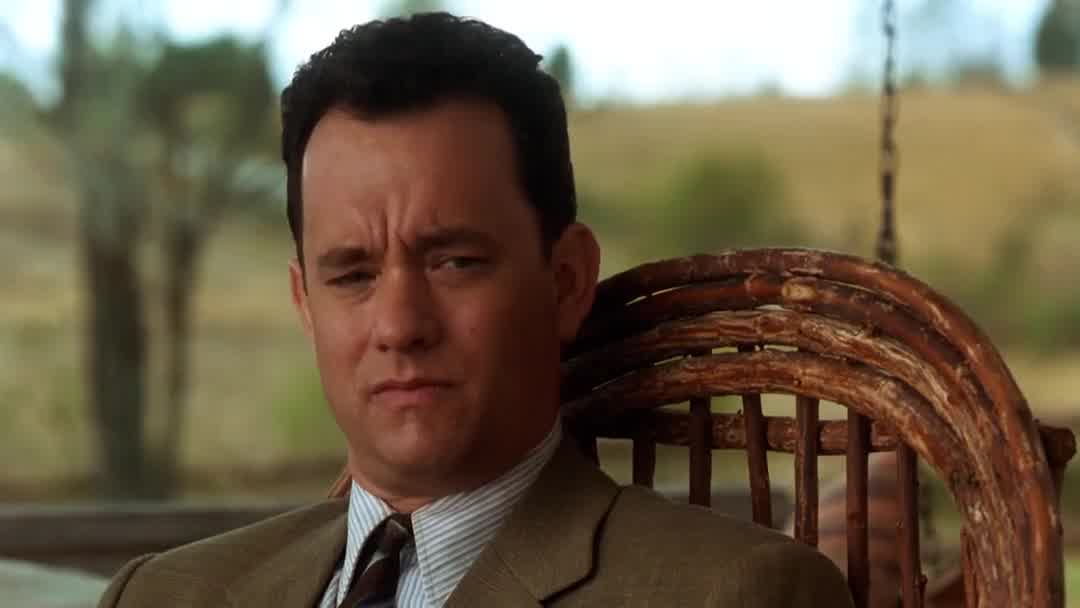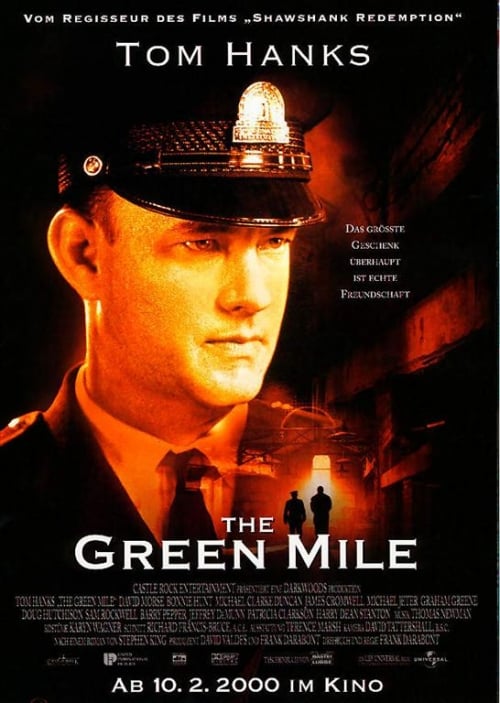Burt Hammersmith In The Green Mile: A Deep Dive
Is the role of Burt Hammersmith in "The Green Mile" merely a supporting one, or does it hold a more profound significance? The character of Burt Hammersmith serves as a crucial lens through which the film explores themes of prejudice, societal biases, and the potential for personal transformation within the context of the American South during the Great Depression.
In the tapestry of "The Green Mile," adapted from Stephen King's novel, Burt Hammersmith emerges as a figure of considerable complexity, a man whose initial convictions and biases are challenged by the unfolding events surrounding John Coffey and his trial. Hammersmith, a reporter for the fictional "Teflon Intelligencer," is introduced to the narrative as the chronicler of the Detterick twins' murders, the crime for which Coffey is accused. His perspective and the way he frames the events offer valuable insights into the prevailing attitudes of the time and the deep-seated prejudices that influenced the justice system.
| Attribute | Details |
|---|---|
| Character Name | Burt Hammersmith |
| Occupation | Newspaper Reporter |
| Affiliation | Teflon Intelligencer (Fictional Newspaper) |
| Key Role in the Film | Covering the Detterick twins' murder case and John Coffey's trial; represents societal prejudices and the evolution of understanding. |
| Actor | Gary Sinise |
| Known for | Reporting on the Detterick twins' murder case and John Coffey's trial, representing the prevalent prejudices of the time. |
| Key Relationships | Interacts with Paul Edgecomb. |
| Themes Explored | Prejudice, justice, morality, redemption, and the supernatural. |
| Setting | Set during the Great Depression, in a death row prison. |
| Significant Quotes |
|
| References | IMDB - The Green Mile |
The film, directed by Frank Darabont and starring Tom Hanks as Paul Edgecomb, delves into the story set in Cold Mountain Penitentiary's death row, known as "The Green Mile." Amidst the backdrop of the Great Depression, the narrative introduces John Coffey (played by Michael Clarke Duncan), a gentle giant with supernatural healing abilities, accused of a heinous crime. Paul, a corrections officer, finds himself wrestling with his conscience and the prevailing societal prejudices as he witnesses Coffey's remarkable gift. In the world of the Green Mile, we find that, "We had us a dog. Just a sweet mongrel, you know the kind. Well, in many ways, a good mongrel dog is like a negro. You get to know it. Often, you get to love it. It is of no particular use, but you" This serves to highlight the mindset of the era and the biases that were deeply ingrained.
- Mochi Munchies Leak The Inside Scoop You Need To Know
- Zach Roerig The Rising Star Who Stole Hearts In Hollywood
Hammersmith's portrayal by Gary Sinise is pivotal. He isn't just a minor character; he serves as a vehicle for exploring the complex interplay between societal attitudes, personal beliefs, and the pursuit of truth. His initial skepticism, and the way he views John Coffey's case, reflects the ingrained racism and prejudice of the time. As Paul Edgecomb begins to question Coffey's guilt, he seeks out Hammersmith, hoping for a different perspective. However, the reporter's steadfast belief in Coffey's culpability underscores the depth of the societal biases that shaped the narrative.
The reporter's presence in the story adds another layer of complexity. His role as the chronicler of events and his stance on the case mirror the broader prejudices prevalent in the community. His character arc illustrates the challenges individuals face in confronting and overcoming biases. The film doesn't shy away from highlighting the ugliness of racism and the ways it permeated even seemingly "enlightened" individuals. Hammersmiths role as a man who "believes himself to be an enlightenment man" encapsulates the contradiction of holding progressive beliefs while simultaneously harboring prejudices.
The setting, a death row prison during the Great Depression, is significant. The oppressive atmosphere, the economic hardship, and the racial tensions of the era create a stark backdrop against which the story unfolds. The prison guards, like Paul, are forced to confront their own biases and morality. The arrival of John Coffey, with his supernatural abilities and gentle nature, forces them to re-evaluate their preconceived notions. His presence challenges the established order and exposes the inherent injustices of the system.
- Dana Reeve The Courageous Legacy That Inspires Millions
- Is Simone Biles Pregnant Unpacking The Rumors And Facts
The brutality of the crime, the rape and murder of two young white girls, is compounded by the fact that the accused is a black man. "As the reporter Hammersmith emphasizes, the scandalous nature of Coffeys crime is not just the result of its brutality (as double rape and murder); Rather, Coffeys crime is considered particularly gruesome because of its interracial nature, as it involves a black man against two white girls." This interracial aspect fuels the societal condemnation and ensures that the trial is more than a simple matter of justice. It becomes a reflection of the racial tensions that were so prevalent in the South.
The film's narrative structure, told from the perspective of an older Paul Edgecomb recounting his experiences, adds a layer of poignancy and reflection. The story is not just a recounting of events but a meditation on guilt, redemption, and the nature of good and evil. The supernatural elements, such as Coffey's healing abilities, further complicate the narrative and challenge the audience's perception of reality. The mysteries around Coffeys origin and arrival in Trappingus County add to the enigma of his character.
The role of Burt Hammersmith, in this context, goes beyond simple exposition. It provides a window into the community's collective consciousness, revealing the biases and prejudices that shaped their perceptions. His interactions with Paul highlight the clash between the old order and the possibility of change. It also mirrors the broader themes of the film, which explores how preconceived notions are challenged by the supernatural and the fight for justice.
Hammersmiths interactions with Paul are key to understanding his character. When Paul seeks him out, Hammersmiths initial skepticism reflects the prevalent societal attitude. Despite his claims of being an "enlightenment man," he clings to his biases, illustrating the insidious nature of prejudice. The film shows that, "A la maana siguiente, paul va a visitar al defensor pblico de john, burt hammersmith, quien est convencido de lo culpable que es john." This interaction underscores the central conflict of the story: the clash between preconceived notions and the possibility of recognizing the truth. In addition, "Burt Hammersmith, avocat ou journaliste?" this question indicates the importance and the impact of Hammersmith.
The film's exploration of racial prejudice is crucial to the narrative. The fact that John Coffey is black immediately predisposes many in the community to believe in his guilt, regardless of the evidence. The film does not shy away from depicting the raw brutality of racism, as it was experienced during that era. The very nature of the crime, as Hammersmith points out, is considered particularly gruesome due to its interracial aspect. It illustrates the unjust realities of the American South during that time.
The film makes it clear that Coffeys story is more than just a crime drama. It explores themes of morality, redemption, and the supernatural. Coffey's character has a strong Christ-like presence, his gifts and his willingness to sacrifice himself. As, "His gifts, his past, his present, and even his name all indicate his role as the story's christ figure." In doing so, the film challenges the audience to confront their own biases and consider the complexities of good and evil.
In the film, "Il miglio verde (the green mile) un film drammatico del 1999 diretto da frank darabont ed interpretato da tom hanks e michael clarke duncan." In this case, the film serves as a profound meditation on humanity and its ability to transform. Burt Hammersmith's presence, even in a supporting role, is necessary to show how the world views things. His character arc symbolizes societal change, challenging the audience to question their own beliefs and recognize the potential for growth.
The film's strength lies in its ability to weave together historical context, supernatural elements, and character-driven narratives. Hammersmith's character serves as a reflection of the complexities and contradictions of the era. By showcasing the internal struggles of those who are prejudiced, the film highlights the hope of progress. The story uses this approach to show the resilience of hope, empathy, and the pursuit of justice, even in the face of seemingly insurmountable odds.
The significance of Burt Hammersmith in "The Green Mile" cannot be overstated. His representation, played by the actor Gary Sinise, is not just a minor role; it is a powerful illustration of societal prejudices and their impact on the judicial system. Through Hammersmiths character, the film offers a message of hope and transformation, underscoring the potential for individuals and societies to evolve, as they confront their own biases. Its a narrative about injustice, forgiveness, and the power of compassion in the face of suffering.



Detail Author:
- Name : Mrs. Gwen Medhurst DDS
- Username : haley.manuela
- Email : khalil.osinski@bosco.info
- Birthdate : 1991-03-03
- Address : 411 Yessenia River Apt. 273 West Anjali, MI 78825
- Phone : (360) 282-3521
- Company : Streich-Harvey
- Job : Maintenance Worker
- Bio : At nulla est facilis optio inventore id aliquid. Voluptas quisquam sit pariatur quae dolorum. Ut quis consequatur sit et.
Socials
tiktok:
- url : https://tiktok.com/@rauo
- username : rauo
- bio : Omnis neque maiores voluptatum dicta. Odit eos et earum quo.
- followers : 5875
- following : 2614
linkedin:
- url : https://linkedin.com/in/rau1986
- username : rau1986
- bio : Non dolor et saepe maxime et.
- followers : 6347
- following : 970
instagram:
- url : https://instagram.com/orau
- username : orau
- bio : Eos culpa iure et. Sint omnis repellendus quia est.
- followers : 6559
- following : 2356
twitter:
- url : https://twitter.com/rau1989
- username : rau1989
- bio : Quos quam perspiciatis nemo et illum. Numquam nulla a unde dolores tenetur fugiat. Inventore possimus est maxime non. Officiis commodi ut qui ut et.
- followers : 4220
- following : 1134